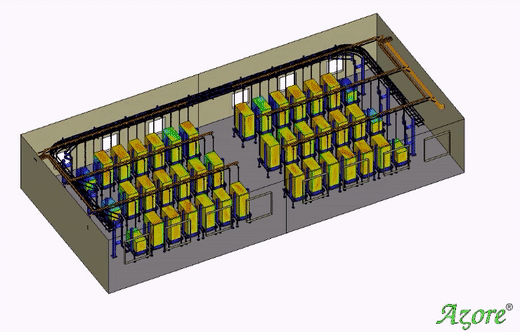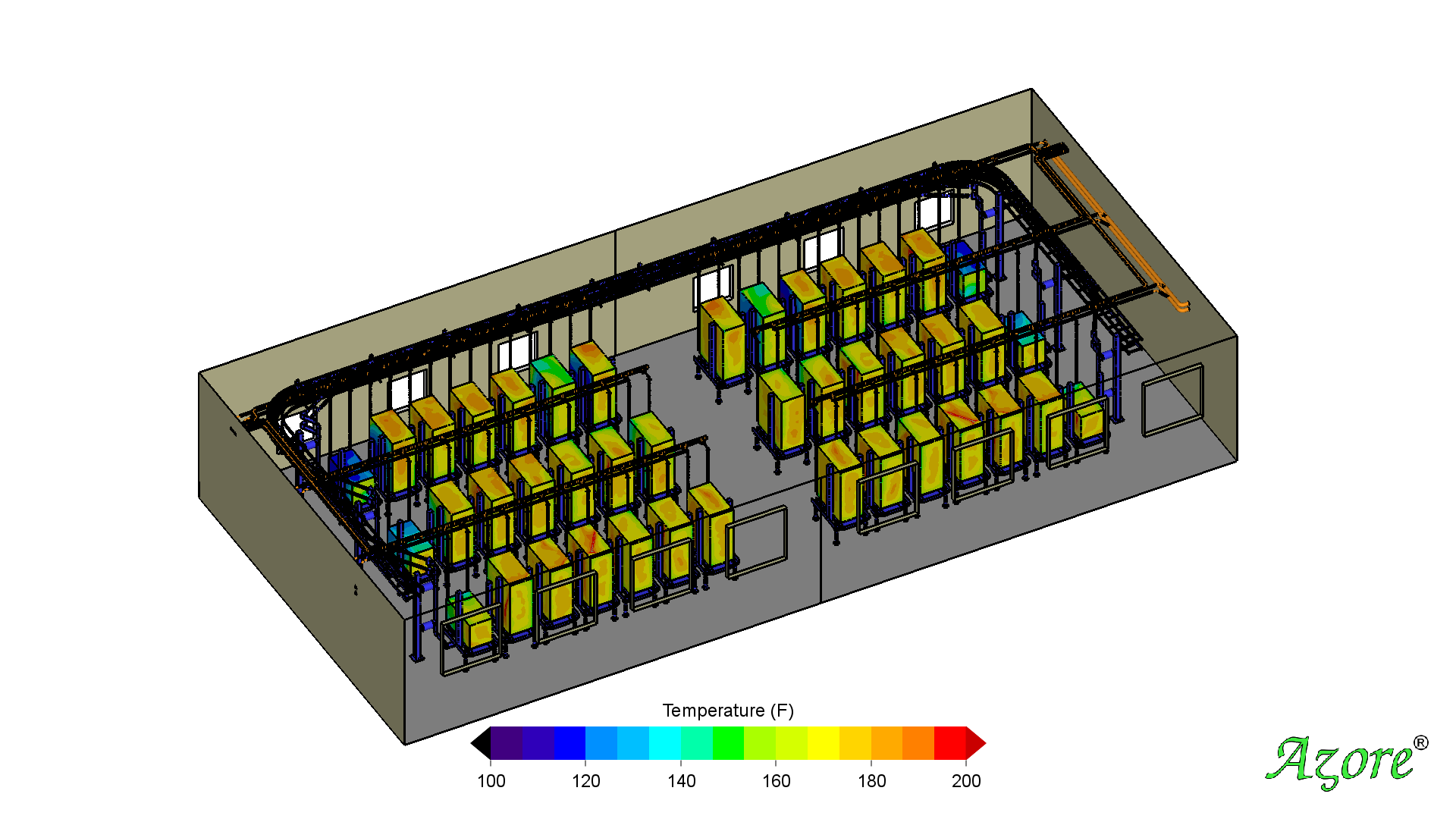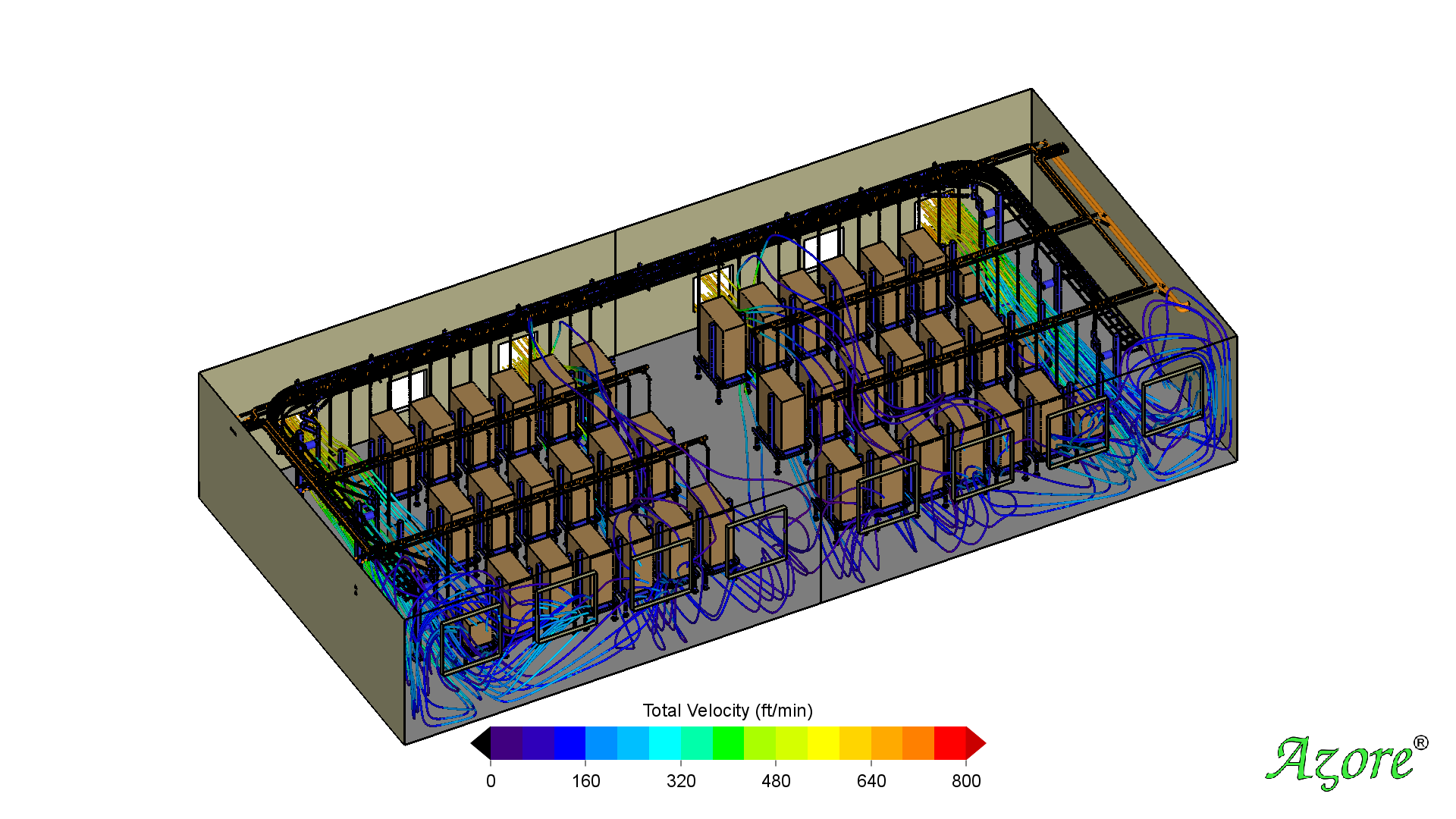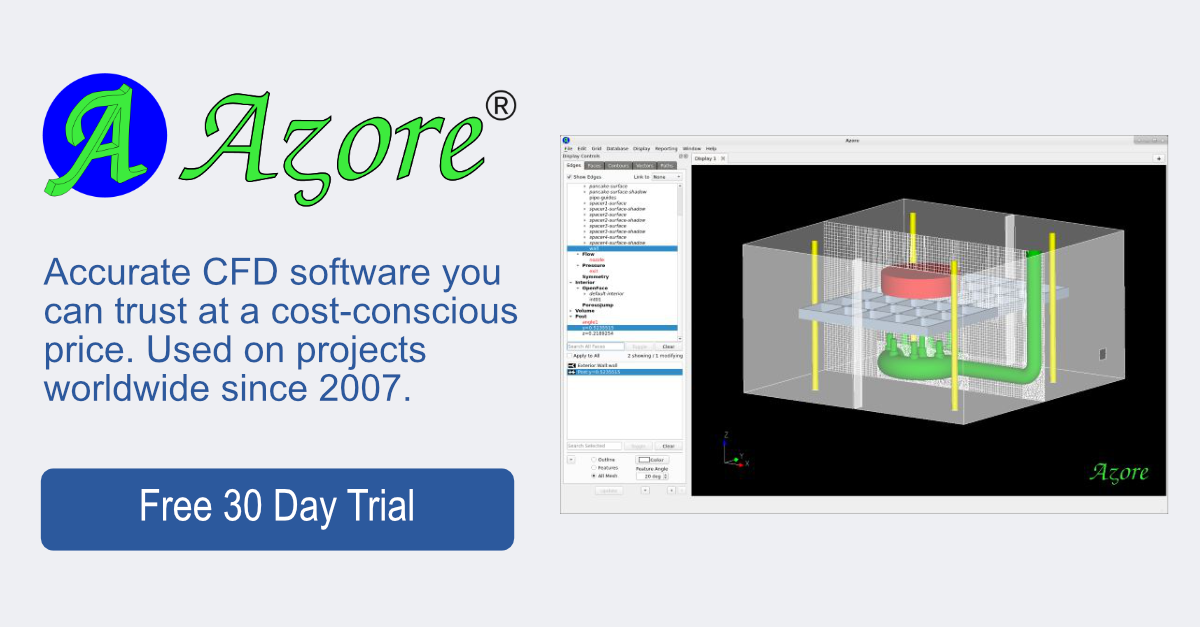HVAC Design for Critical Cooling Applications
by Rob Mudry, P.E.
There are many facilities that house a significant amount of electronics equipment, including data centers, battery storage buildings, electricity converter warehouses, and bitcoin mining rooms. The electronics generate considerable amounts of heat, and the facilities require well-designed air cooling systems in order to keep the servers and computer components from overheating. The air conditioning and ventilation system engineering for these facilities involves Computational Fluid Dynamics (CFD) modeling in order to optimize the cooling and protect the high-dollar electronic equipment.

An electrical converter warehouse in the eastern U.S. required consistent cooling over a range of ambient weather conditions and equipment operating scenarios. The system converts AC to DC power and monitors voltage and amperage over a multi-state electrical transmission grid serving millions of homes. The heat generated by each converter cabinet has to be dissipated, keeping the room and the equipment temperatures consistent day and night. This critical infrastructure requires the maximum attention to cooling system design in order to protect the equipment from overheating and ensure reliable operation.
Engineering calculations using ASHRAE guidelines provide initial estimates for air flow rates and thermal loads, but CFD modeling is essential to examine the 3D nature of the velocity and temperature patterns within the facility. CFD simulations are conducted to optimize the positioning of the inlet and exhaust vents, size the air conditioning system and fans, avoid local hot spots, and minimize stagnant flow areas.
The CFD images and animation from the Azore CFD software depict the min/max temperatures and velocity patterns from the ventilation system. This model geometry was built in the Solidworks CAD package, and the 42 million cell CFD mesh was created in the Ansys Meshing software. Azore integrates very well with Ansys, importing and exporting .msh and .cas files directly. After the Azore CFD solver converges to a solution, its built in post-processing tool allows for immediate plotting and creation of animations, and also provides a detailed analysis of the CFD data, reporting min/max/average/st.deviation and other vital statistics automatically. The Azore automation tools for analysis, along with HPC parallel processing of the solver, maximize efficiency of the CFD engineer, allowing more design runs to be completed in a given time. This converter warehouse designed with Azore has been operating successfully since fall 2019.



